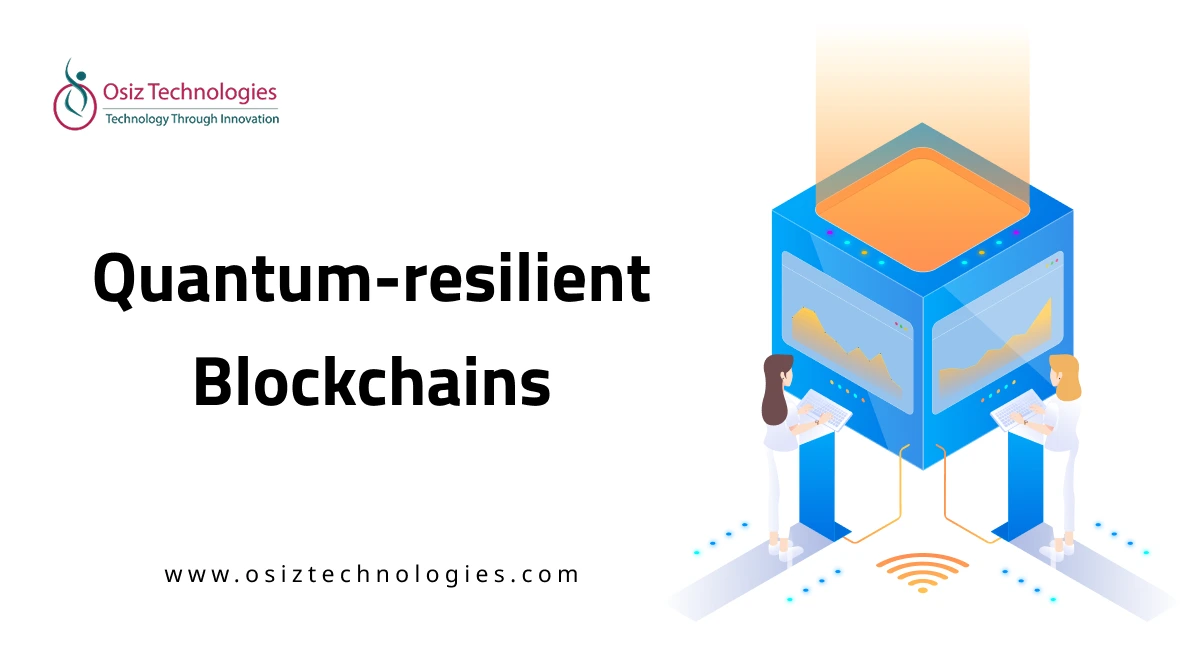Quantum computing is changing digital security. As these computers improve, older defenses become less useful. We need fresh approaches to keep blockchains secure. Quantum-resistant blockchain solutions, next-generation cryptography, and quantum-proof systems are gaining importance.
Why Quantum Computing Is a Threat to Today’s Blockchains
Quantum computers pose a serious threat to blockchain security by potentially breaking the encryption that protects them. Using advanced techniques such as Shor's and Grover's algorithms, they could deduce secret keys from public ones, enabling the theft of cryptocurrency. They might also forge digital signatures, disrupt smart contracts, and undermine the integrity of blockchain systems. Additionally, Grover’s algorithm could weaken the security of hash functions used in blockchains, giving quantum computers an advantage in mining new blocks.
What Makes Quantum Computers So Powerful?
Quantum computers are quite powerful because they use quantum mechanics principles such as superposition and entanglement. Instead of processing information bit by bit, qubits perform many calculations at once. This lets them explore various possibilities at the same time, making them much faster than standard computers when tackling complex issues.
How Traditional Blockchain Work (and Where They Fail Against Quantum Attacks)
How Regular Blockchain Work
Typical blockchains protect deals with hashing (SHA-256) and public-key crypto (ECDSA). Each deal is signed with a private key and checked with a public key. Blocks are linked using hash pointers to stop messing with them. Ways of agreeing, like Proof of Work or Proof of Stake, make sure only real deals are added. How safe they are depends on how hard it is to figure out math problems that regular computers can't beat fast.
Why They Don't Work Against Quantum Attacks
Quantum computers can mess up this safety. Shor’s way can get private keys from public keys, letting bad people grab money or fake signatures. Grover’s way makes hashing weaker by making brute-force attacks faster. So, regular blockchains that count on today's crypto rules are in danger, mainly addresses where public keys are already out there. If they don't get upgrades to fight quantum computers, these blockchains could have signatures faked and deals changed.
What Are Quantum-Resilient Blockchains?
Quantum-resilient blockchains are designed to stand strong against quantum computer attacks. They use advanced encryption that protects against current and future threats. These systems safeguard decentralized networks. Quantum computers could crack today's blockchain encryption. Quantum-resilient blockchains use lattice or hash-based encryption to stay ahead.
Key Technologies Behind Quantum-Safe Blockchains
Lattice-Based Blockchains employ tricky math problems that are hard for both regular and quantum computers. This makes transactions and digital IDs very secure. They also support lots of work, which is useful for growing blockchain networks.
Hash-Based Blockchains systems feature digital signatures secure against quantum computing threats and are designed to remain effective as computer speeds increase. Leveraging straightforward cryptographic methods, they excel at ensuring data integrity and safety.
Multivariate Signature Blockchains employ mathematical equations to create fast and compact signatures. Since quantum computers struggle with this math, they offer a secure option for efficient and speedy blockchain applications.
Code-Based Cryptographic Blockchains use codes to keep communications safe and protect data. This method has been studied for years and can resist quantum attacks well. Their reliability aligns perfectly with the needs of long-lasting, quantum-secure cryptography systems.
Supersingular Isogeny-Based Blockchains use a type of cryptography that defends against quantum attacks while keeping keys small. They work well in current blockchain setups and are a superb way to secure blockchains later.
Real-World Use Cases That Need Quantum-Safe Blockchain Security
1. Banking &Digital Payments - To keep money and digital assets safe in the long run, financial transactions and payment systems need encryption that can resist quantum computers.
2. Healthcare Data Storage - Patient data is sensitive, so it needs strong protection that can stand up to attacks in the future.
3. Government Records & Citizen Identity - Systems for national ID and important legal papers must be protected for many years.
4. Supply Chain Tracking - Global supply chains rely on verification methods that can't be broken.
5. Enterprise Cloud & Data Centers - Businesses require authentication that can resist quantum computers to protect their infrastructure over time.
Industries Likely to Adopt Quantum-Resilient Blockchains
Finance & FinTech
This sector protects assets for the long haul and follows rules closely, so it's quick to adopt quantum-safe systems. Banks, exchanges, and payment platforms need strong encryption that can handle future quantum threats.
Defense & National Security
Because classified communications and vital systems need top-notch security, encryption must stay safe, even from advanced quantum computers. Governments focus on quantum-ready tech to guard secrets and key operations.
Energy & Utility Networks
Power grids, smart meters, and sensors depend on trustworthy identity verification to prevent major problems, and quantum-resistant security guarantees these vital systems stay secure for decades.
Telecom & 5G Infrastructure
Telecom networks need quantum-ready defenses to guard communication channels and user data. As 5G gets bigger, carriers must have encryption that will work in the future to secure global connections.
Global Logistics & Trade
Global supply chains rely on trustworthy verification across networks and locations, and quantum-safe systems ensure data remains authentic, transparent, and secure in international operations.
Existing Projects Working on Quantum-Safe Blockchain Solutions
Quantinuum’s Encryption Approach
Quantinuum, a company created from Honeywell Quantum Solutions and Cambridge Quantum, started its encryption work around 2020. The main idea is to add post-quantum cryptography to ledger systems. The aim is to keep blockchain transactions safe for a long time by using strong, quantum-resistant signatures and key exchanges.
PQChain Blockchain Project
PQChain comes from a blockchain research team focused on a fully quantum-resistant network. Started in the early 2020s, its design uses lattice-based and hash-based cryptography. The goal is to make secure smart contracts, digital IDs, and make things scalable for post-quantum settings.
Ethereum’s Quantum Work
After 2022, the Ethereum Foundation started checking out post-quantum cryptography, after worldwide PQC standards were set. The team is testing quantum-safe signatures and ways to exchange keys for future versions of Ethereum. The work makes sure the network can switch to PQC-based wallets, nodes, and transaction formats before quantum computers become common.
Is the Blockchain Ecosystem Ready for the Quantum Era?
The future of blockchain security in a post-quantum world depends on proactive adoption, global standards, and strong cryptographic upgrades. This means all agreeing on standards and upgrading our security tech. Blockchains must switch from current security to systems that can resist quantum attacks well before those computers are widespread.
As companies get ready, Osiz, as a prominent Blockchain Development Company helps businesses change to stronger, quantum-resistant systems as part of their overall plan. The field is progressing, but being truly ready means growing together in tech, management, and security methods.
Listen To The Article
Recent Blogs

Black Friday 30%
Offer











